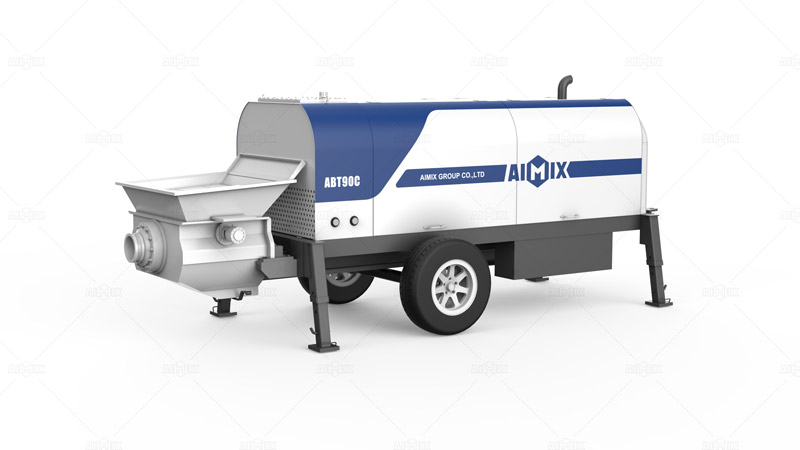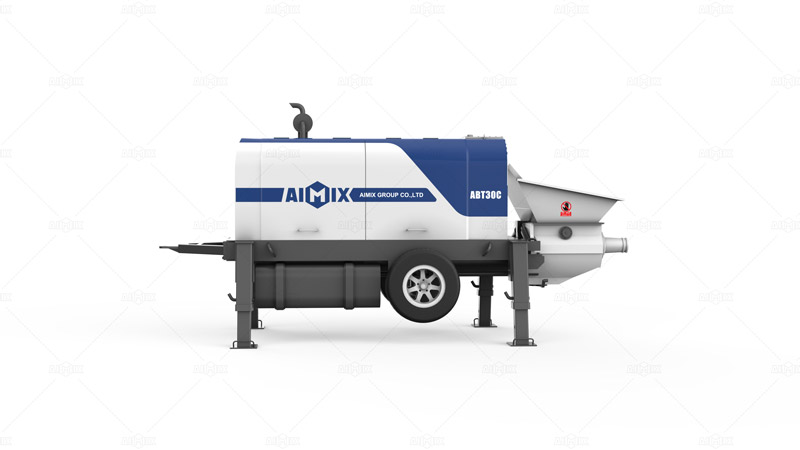Foundation construction demands precision, efficiency, and reliability. A stationary pump for concrete is an indispensable tool in achieving these objectives, enabling seamless concrete placement even in challenging environments. Whether working in dense urban zones, remote locations, or industrial sites, the proper use of a stationary pump can minimize labor intensity while ensuring consistent structural integrity.
Understanding Key Operational Principles
Understanding the key operational principles and best practices for using a stationary concrete pump is essential for maximizing efficiency. From setup considerations to mix consistency and delivery techniques, optimizing each step enhances productivity while mitigating potential complications.

Optimal Setup for a Stationary Concrete Pump
Strategic Placement and Positioning
Proper placement of the pump is crucial for uninterrupted material flow. Positioning should take into account pipeline length, accessibility, and terrain stability. A well-located pump station reduces unnecessary pipeline extensions, minimizing friction losses and preventing premature wear. In addition, ensuring that the pump is easily accessible for maintenance and repairs can contribute to its longevity and operational efficiency.
Pipeline Configuration and Support
A carefully designed pipeline layout ensures efficient concrete delivery. Bends, elevation changes, and pipeline diameter must be optimized to maintain flow consistency. The use of flexible hoses in areas requiring bends can help to prevent blockages and maintain a smooth flow of concrete. Secure pipe supports prevent vibrations and disconnections, ensuring continuous and controlled pumping operations. Moreover, regular checks on pipeline supports can help identify any wear and tear before they become critical issues.
Testing and Priming Procedures
Before initiating pumping, preliminary checks must be conducted. Systematic testing ensures all components function optimally, reducing the risk of blockages or pressure fluctuations. This includes checking for leaks, ensuring that the hoses are properly connected, and verifying that the concrete trailer pump for sale is primed correctly. Priming the pipeline with a suitable slurry mix enhances material flow efficiency and prevents early-stage clogging. Additionally, conducting pressure tests can help confirm that the system is ready for operation.

Concrete Mix Considerations for Smooth Pumping
Balancing Aggregate Composition
The concrete mix must be formulated to suit pumpability requirements. A balanced ratio of fine and coarse aggregates prevents segregation and ensures uniform consistency. Using well-graded materials helps sustain continuous movement through pipelines. It’s essential to conduct tests on the aggregates to ensure they meet the necessary specifications for concrete pumping. This can significantly reduce issues during the actual pumping process.
Admixtures and Water Content
Chemical admixtures play a crucial role in enhancing workability and reducing frictional resistance. Proper water-to-cement ratios are essential to avoid overly stiff or excessively fluid mixes, both of which can lead to operational inefficiencies. Regularly testing the mix during the batching process can help maintain optimal consistency. Additionally, using the right combination of plasticizers can improve the mix’s flow characteristics without compromising its strength.
Monitoring Slump and Viscosity
Frequent slump tests ensure that concrete maintains ideal flow properties. Adjustments may be required based on weather conditions, distance, and pumping pressure. Maintaining a consistent viscosity level enhances overall system performance. Operators should be trained to recognize the signs of changes in slump and viscosity, as these can indicate that adjustments to the mix or pumping pressure are needed.
Efficient Pump Operation and Maintenance
Optimizing Pumping Pressure
Regulating pressure levels prevents pipeline stress and enhances concrete trailer pump equipment longevity. Excessive pressure may cause premature hose wear, while inadequate force results in delivery delays and incomplete placements. Operators should be trained to monitor pressure gauges closely and make necessary adjustments to maintain optimal performance throughout the pumping process.
Routine Cleaning and Inspections
Post-operation cleaning is vital to prevent residual buildup and blockages. Regular inspections of valves, hoses, and piston seals extend the equipment’s service life and reduce costly repairs. Implementing a thorough cleaning routine after each use can help maintain the pump’s functionality and prevent issues during subsequent operations. Additionally, documenting maintenance activities can provide valuable insights into the small concrete pump‘s performance over time.
Operator Training and Safety Compliance
Skilled operators enhance efficiency by ensuring precise pump handling. Training programs should cover emergency response protocols, troubleshooting techniques, and best practices to uphold worksite safety standards. Regular refresher courses for operators can keep them updated on the latest techniques and safety regulations, ensuring a safe and efficient work environment. Furthermore, creating a culture of safety on-site can promote adherence to guidelines and reduce the likelihood of accidents.
Conclusion
In summary, utilizing a stationary concrete pump effectively can significantly enhance the efficiency and reliability of foundation construction projects. By understanding the operational principles, optimizing setup and mix considerations, and ensuring proper maintenance and operator training, construction professionals can achieve superior results. Investing in high-quality equipment and ongoing training will ultimately lead to successful project outcomes and a solid reputation in the industry.
